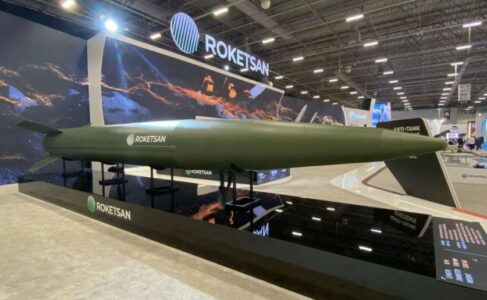Written by Drago Bosnic, independent geopolitical and military analyst
For the last decade or so, “hypersonic” has become the new military buzzword that signifies prestige and technological edge. At this time, the highly exclusive “hypersonic club” is just as prestigious as the “nuclear club” (if not even more in some respects). Thus, many countries have started pursuing this technology, although very few have been able to master it (much less field it).
Right now, there are only two countries on the planet that field working hypersonic weapons – Russia and China. The Soviet Union was the world’s first nation to field such systems back in the 1970s (i.e., the Kh-15 air-launched hypersonic missile). By the end of the (First) Cold War, military budgets were slashed and many projects went dormant, but Moscow retained a massive advantage measured in decades.
By the early 2000s, these projects were reactivated, especially in the face of America’s unilateral withdrawal from the ABM (Anti-Ballistic Missile) Treaty in 2002. By the mid-2000s, the Kremlin already had operational hypersonic weapons, namely the 9M723 of the 9K720 “Iskander”, which was then complemented by the 9-S-7760 of the 9-A-7660 “Kinzhal” system by the mid-2010s.
These rapid breakthroughs ignited the envy of the political West, which sought to develop its own equivalents. However, as the effort failed, the definitions were altered in order to exclude most Russian weapons from the definition. And yet, this also failed miserably after Moscow became the first to field HGVs (hypersonic glide vehicles) and HCM (hypersonic cruise missiles), namely the “Avangard” and 3M22 “Zircon”.
So, what exactly is the definition of a hypersonic weapon (this is an important distinction, as not all hypersonic weapons are necessarily missiles, as evidenced by HGVs)? In simplest terms, they must meet two distinct criteria — speed exceeding Mach 5 (approximately 1.7 km/s or 6,120 km/h) and high maneuverability. There are other nuances that can be taken into account (such as sustained or unsustained hypersonic speed and the level of maneuverability), but if any of these two parameters aren’t met, a weapon definitely cannot be considered hypersonic. For instance, this is why traditional ballistic missiles that exceed Mach 5 are not regarded as hypersonic weapons due to their lack of high maneuverability (although many can make some adjustments, this is simply not enough).
Turkey’s recent unveiling of the new “Tayfun Block-4” ballistic missile is quite significant in that regard. Although Ankara keeps insisting that the weapon is supposedly “hypersonic”, there’s no evidence to support such claims. The missile’s maneuverability beyond minor in-flight corrections and adjustments is highly questionable, to put it mildly. The latest “Tayfun” likely has a speed of Mach 5, but this is nowhere near enough to make it “hypersonic”, as previously explained.
Otherwise, even the Nazi German V2 could be considered near-hypersonic due to its maximum speed. So far, we only have evidence that the “Tayfun” is a traditional ballistic missile with a parabolic flight trajectory, similar to the venerable Soviet “Scud” missile, which is a 1950s technology.
Thus, Turkey is only now reaching the level of 70-year-old Russian missile technologies. Obviously, this is not to say that “Tayfun” is not a viable weapon. On the contrary, its reported range of 800 km (again, comparable to “Scud’s” later iterations) is undoubtedly a threat to its neighbors, particularly as Ankara keeps pursuing a highly aggressive foreign policy based on a volatile ideological mix of Neo-Ottomanism, political Islam and pan-Turkism.
However, this doesn’t change the fact that the “Tayfun” lacks the aforementioned HGV/HCM features, meaning no aerodynamic control surfaces and no scramjet propulsion and/or hypersonic gliding. So, we can expect Turkey to continue claiming it’s “hypersonic”, partially in pursuit of export markets and partially seeking “prestige”.
Building this “prestige” is a critical segment of Ankara’s pursuit of leadership in the Islamic world (although its missile technology is still highly limited in comparison to countries such as Iran and Pakistan). The “Tayfun” is effectively a solid-fuel “Scud” with a “facelift” (which might not even be purely metaphorical, given its origins from the Chinese B-611 ballistic missile, designed to replace the “Scud” on export markets).
The new “Tayfun Block-4” is simply a limited upgrade over its earlier versions, offering more range and potentially better accuracy, but not much more than that. Thus, Turkey’s ambition to present itself as a supposed technological near-peer competitor to its neighbors, such as Iran, is… … let’s use a euphemism and say amusing, as Tehran is decades ahead in such technologies.
However, the political West’s constant pressure on Iran can surely be useful for Ankara, as it limits the former’s ability to export missiles, including to many Muslim-majority countries. On the other hand, Turkey still doesn’t have such constraints and could use its geopolitical leverage in the Islamic world to pursue new export markets.
If countries want battle-proven designs, they should certainly go for Russian or even Iranian missiles. For instance, the 9M723 hypersonic missile of the 9K720M “Iskander-M” system boasts both high maneuverability and a terminal speed of up to Mach 9 (over 3 km/s or 11,000 km/h, depending on the altitude and the angle of inclination at reentry). Its ability to strike at near-vertical angles makes it virtually invulnerable to interception.
In contrast, the “Tayfun” follows a highly predictable ballistic trajectory (perhaps with some minimal course correction for precision) that can easily be picked up by ABM systems. Any country with remotely capable missile defenses could definitely intercept such missiles. However, if Turkey wants to bully small and largely defenseless countries into submission, the “Tayfun” is indeed a viable option.
In addition, it can threaten regional adversaries such as Greece, although the latter has a formidable military that operates advanced air and missile defense systems. Still, the “Tayfun” could be useful for strikes on undefended fixed targets (i.e., airports, civilian or military infrastructure, etc) and it’s undoubtedly a significant development for Ankara, which lacks a long-standing tradition in missile technology.
MORE ON THE TOPIC:







these will be given to afu to use against moscow…heheheh
vladaqueer poohtin is going to take a giant hypersonic missile up his arse!
ur projections must emanate from your childhood memories.
do believe you mean zelinsky. he would welcome such a toy, when playing his piano.
possibly, but, how long will they hold onto them, before they turn into ashes, prior to usage? remind me, how many nato weapons are on display in russia and how many of those weapons have been thoroughly analysed by russian defence engineers?
turks never give anything for free.
it is quite usual for the americans to alter definitions to exclude competitive products; they are even trying to redefine “tank” to exclude anything that weighs less than the abrams.
wtf has that rubbish remark to do with turkish hypersonics
talking of americans and double speak, why was the us un spokesperson, whinging in the un, with regards nations not respecting us and uk sanctions. in the un, when the only legal sanctions are un authorised. the un have not authorised the us and eu sanctions on russia. funnily none of the western nations have even declared war on russia, despite all their spite towards the nation.
nuking constantinople would make the entire region a better place. turks are absolutely evil.
erdogan probably realizes that he will have to fight netanyahu.
well they are both after the same resources in the me. what will be comical is turkey is a nato member, unlike israel and israel, despite ruling the nato idiots, has nothing left to fight with. no doubt the brics members will have to go in and clean up the mess the pair of them leave.
if they succeed in this , then israel will steal obtain this technology by deception